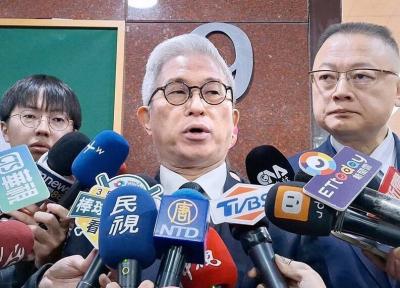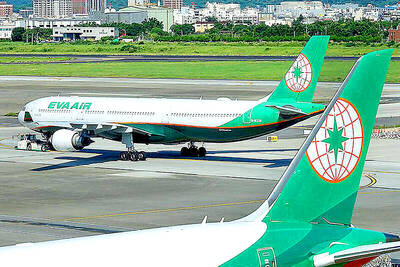The suspected suicide of a veterinarian by animal euthanasia drugs has prompted authorities to reconsider an animal euthanasia policy, officials said yesterday, offering condolences and reaffirming a zero animal euthanasia policy that is expected to be implemented next year.
Chien Chih-cheng (簡稚澄), the director of an animal shelter in Taoyuan’s Sinwu District (新屋), allegedly committed suicide using animal euthanasia drugs on May 5.
The news of her death only became public on Friday last week, triggering a wave of condolence messages online, along with messages of concern for stray animals.
Chien allegedly left a note saying that while she was a passionate animal lover, she was extremely disturbed by having to euthanize animals and took her own life as a message that “all lives are equal” in the hope that the government would put more effort into managing stray animals.
Taoyuan City Councilor Wang Hao-yu (王浩宇) said Chien was under immense stress due to misinformed criticism directed at her and the shelter.
“Some animal welfare activists have unleashed relentless attacks on the Sinwu shelter and Chien was a target of those attacks. She was even described as a ‘butcher.’ For a young woman who chose to work at the shelter because of her love for animals and whose duties involved euthanizing stray animals every day, those abuses were like stabs to the heart,” Wang wrote on Facebook.
The “zero euthanasia” policy — which is planned for implementation next year — is likely to exhaust animal shelters with limited capacity and resources, as pet abandonment rates and stray animal reproduction rates have yet to be substantially reduced, veterinarian Kung Chien-chia (龔建嘉) said.
“Zero euthanasia is a false policy if there are no supportive measures to reduce pet abandonment rates to zero. Shelters have limited spaces, personnel and resources, but the number of admitted animals will keep increasing. The false policy — which the government created for better publicity regardless of an animal’s situation — will cause more pain to animals,” Kung said.
The Council of Agriculture yesterday expressed regret over Chien’s death, with council minister Tsao Chi-hung (曹啟鴻) offering condolences to the Chien family.
The council said it understood the plight of animal shelters and would seek improvements.
Following an amendment to the Animal Protection Act (動物保護法) in February, 33 public animal shelters will have to stop euthanizing animals in February next year, which could overload shelters. The government plans to invest NT$190 million (US$5.8 million) in increasing shelter capacity and improving animal protection by 2018, the council said.
The stray animal adoption rate has increased from 28.7 percent in 2012 to 70.4 percent, with 550,000 animals adopted last year, while shelter animal euthanasia rates were reduced from 50.1 percent in 2012 to 12 percent last year, the council said, adding that the government and the public need to work together to face the challenge of stray animal management.

A strong continental cold air mass is to bring pollutants to Taiwan from tomorrow, the Ministry of Environment said today, as it issued an “orange” air quality alert for most of the country. All of Taiwan except for Hualien and Taitung counties is to be under an “orange” air quality alert tomorrow, indicating air quality that is unhealthy for sensitive groups. In China, areas from Shandong to Shanghai have been enveloped in haze since Saturday, the ministry said in a news release. Yesterday, hourly concentrations of PM2.5 in these areas ranged from 65 to 160 micrograms per cubic meter (mg/m³), and pollutants were

Taiwan’s armed forces have established response protocols for a wide range of sudden contingencies, including the “Wan Chun Plan” to protect the head of state, the Ministry of Defense (MND) said today. After US President Donald Trump on Saturday launched a series of airstrikes in Venezuela and kidnapped Venezuelan President Nicolas Maduro, concerns have been raised as to whether China would launch a similar “decapitation strike” on Taiwan. The armed forces regularly coordinate with relevant agencies and practice drills to ensure preparedness for a wide range of scenarios, Vice Minister of National Defense Hsu Szu-chien (徐斯儉) told reporters before a

EVA Airways on Saturday said that it had suspended a pilot and opened an investigation after he allegedly lost his temper and punched the first officer several times as their plane was taxiing before takeoff at Los Angeles International Airport. According to a report published on Thursday by The Reporter, the incident occurred after the flight’s Malaysian first officer tried to warn the Taiwanese pilot, surnamed Wen (文), that he was taxiing faster than the speed limit of 30 knots (55.6kph). After alerting the pilot several times without response, the first officer manually applied the brakes in accordance with standard operating

The New Taipei City Social Welfare Department on Thursday celebrated Paralympic competitor Chen Tzu-wei (張孜維), who received last year’s national Golden Eagle award for exemplary achievement by Taiwanese with disabilities. Chen, who suffers from childhood-onset muscular dystrophy, did not attend the first award ceremony held by the Ministry of Health and Welfare in November due to illness. Chen was formally presented with the award at the department, where he gave thanks to government workers for supporting his education and livelihood, the department said in a statement. Chen was raised by the Ai-hsin Home for Persons with Disabilities in the city’s Bali District (八里)